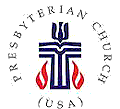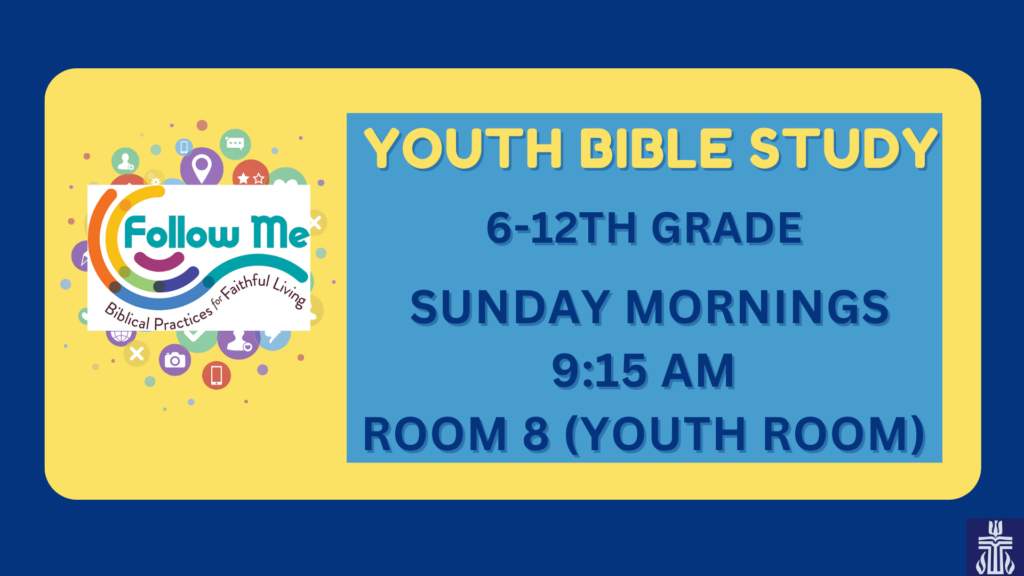Throughout this Lenten season, our texts reveal some pretty incredible ways in which God reaches out to us, and gives us different gifts to help us understand and grow in faith. Last week, we heard of how the Psalmist reminds us that God is here with the gift of help. This week, Jesus himself offers a tremendous gift. He pauses to take a rest on a long journey north from Judea to Galilee, which takes him through Samaria. In the heat of the day, a woman comes to draw water from the village’s well. It is startling that he would even speak to her. First of all, she is a woman, and beyond that, she is a Samaritan. The conflict between the Samaritans and Jews was more than 200 years old at this point, stemming from a disagreement over the proper place to worship, and evolving over the years to reach the point, as our text says, where Jews and Samaritans wanted nothing to do with one another[ii]. In fact, many Jews would have taken an alternate route than Jesus to avoid any such encounters with the Samaritans. But not Jesus. He crashes through multiple cultural boundaries with a profound moment that reveals the very essence of what he is about. And what follows is the longest conversation Jesus has with anyone in any of our gospels.
There are so many things to focus on in this text that it is enough to make us dizzy. Over the years, many get drawn into the scandal of the story and become particularly focused on the woman’s history. We are quick to pass moral judgment on the only thing we know about her beyond her identification as a Samaritan – that she has had 5 husbands and is now living with a sixth man. We mark her as some sort of wanton woman, and use this story to demonstrate how Jesus, yet again, reaches out to those sinful and lost people and offers them salvation. Admittedly, this is one of the first perspectives I thought of when I saw this text come up as one of the lectionary options. But as I’ve read it this week, I am struck by the reality that although this is mentioned as a fact, nowhere, not once, does the text label her as sinful, or really explore any of the details surrounding her circumstances. We do not hear Jesus offering words of forgiveness, or telling her “go and sin no more,” as he does with others. Some commentators even wonder if perhaps she was widowed multiple times, married to a series of brothers in term as the law of Moses would have required. But any of this is guessing. We simply don’t know. Perhaps, then, this little detail is more of a red herring for us than anything else, and we should turn our attention instead to what the woman says and does at the well.
On the surface, it’s a pretty ordinary daily chore. Going to the well for water was routine in the 1st century, although many did it in the cooler morning hours. Here, the woman comes in the hot noon-day sun, perhaps because she has run out of water or perhaps to avoid others coming to draw water. She brings her water jug, of course, and seeks a basic essential for daily life. Although this act may seem like a bit of a novelty to us, it likely was as mundane of a task as we have doing laundry or washing dishes. She encounters a stranger, though, who interrupts her day with a favor. More than this, though, he starts speaking about water in strange and different ways. He lays it out for the woman, how this will be water that sustains and means that a person will never be thirsty again.
At first, she can’t get beyond the literal. Like Nicodemus, she is trapped by her own understanding of how the world works, and isn’t thinking in the kind of metaphor and symbolic tone that Jesus is using to teach and reveal God’s work. She points out that this man has no bucket and the well is too deep. She offers a reminder that their location is not just any well, it is Jacob’s well, Israel’s ancestor, and a sign of God’s promise and providence in its own. The conversation begins to shift, though, as the thirsty man starts to talk about “living water.” Here, the woman begins to see that this stranger at the well might be more than meets the eye. Perhaps he is one like her ancestor Jacob, through whom God provides miracles of water. A never-ending water jug would certainly make her life easier. She wouldn’t have to make the long and difficult journey every day. And so she asks for this life-giving water, still not fully comprehending what it means, but sensing that such an abundant supply would certainly make her life easier. Her focus is on having her bucket filled.
As people of faith, we often use this metaphor of filling a bucket to describe our experience of God on Sunday mornings. Worship becomes our well, and we say that we come to be filled. If we aren’t careful, this leads us to think about our worship experience as simply a routine chore of our faith, one that can become quite mundane. It can also be pretty self-centered, “my bucket is empty, so I come to get what I need,” leading us into a consumeristic mindset about our faith. But, if we’re attentive to the metaphor, it can be helpful to us. This morning is the third Sunday in Lent, and in this season we might take a good hard look at those buckets in our hands. When I was in Girl Scouts, I learned one of those annoying camp songs that begins, “there’s a hole in my bucket, Dear Liza, Dear Liza, there’s a hole in my bucket, dear Liza, a hole.” The next line goes “then fix it, dear Henry, dear Henry, then fix it dear Henry, dear Henry, fix it.” The song goes on and on, and on, quite a while with different suggestions, ultimately returning to the same reality that there is a “hole in the bucket.” I wonder sometimes if we are carrying buckets with holes in it. Some may have just a few little cracks and weaknesses that cause slow little trickles. Some may have buckets that are more like colanders. Or, maybe your bucket might be fine, but is carried so fast that water sloshes out from the top, or something from the week trips you up and all of the water spills out. And so we return, week after week, to get our buckets patched up and refilled. We are like the Samaritan woman, coming to get water. But rather than a simple transactional encounter at the well, the woman encounters Christ.
Throughout their conversation, Jesus works to push the woman out of her literal, consumer mindset that is focused on the water. He is talking about something bigger and greater. He tips his hat by revealing to her things that a stranger certainly wouldn’t know, which gets her thinking, this guy just might be a prophet. Now, the theological conversation can begin. And it does, immediately leading to the disagreement between their peoples regarding worship. Gently, but firmly, Jesus points away from the literal discrepancy with the response that worship is more about spirit and truth than any physical location. Likewise, the dots are connected that perhaps living water is more about the literal well – and instead about something related to spirit and truth.
Jesus’ gift of “living water” pushes against the Samaritan woman’s and our understanding of what it means to come to the well. Rather than something transactional, he speaks of something that is living and moving, bubbling and constantly changing. Living water is associated with our understanding of the Holy Spirit, who moves among us and inspires us to a new way of living[iii]. This beautiful story in John’s gospel challenges this metaphor for our spiritual lives, and suggests that what Jesus has to offer means we don’t need a bucket at all. Living water breaks us from looking at faith as simply something we consume, and instead looking at faith as something that consumes us.
The conversation between the woman and Jesus ends when the disciples come back, although they stand speechless at the scandal of the situation. The text gives a dramatic pause, during which we might imagine all that has transpired soaking into the woman’s mind, as she draws some pivotal conclusions and rushes to share her story with the rest of the town, asking “could this be the Christ?” (verse 29). In her exit, John notes an important fact in verse 28. In leaving, the woman’s jar for drawing water remains at the well. Frances Taylor Gench offers that this fact:
teases our imaginations and is open to varied interpretations. Perhaps it conveys the woman’s enthusiasm and haste to share her news; perhaps she has no further need for it as she is now in possession of living water and will never thirst again (4:14); maybe even she herself has become a vessel for the gospel. Alternatively, some see it as the Johannine feminine counterpart to the Synoptic presentation of male disciples leaving their nets and boats behind to follow Jesus, or more simply, as an indication that the woman intends to return to the well. Her story is not finished yet[iv].
But her encounter at the well means that her life is forever changed.
The woman at the well becomes one of the first witnesses in John’s gospel to Jesus as the Messiah, the promised one. She is an outsider in virtually every way we could slice it, and yet is the bearer of good news. Her identification as a Samaritan brings life to the promise of John 3:16 that indeed the Savior has come for all “the world.” Even the Samaritans. In fact, it is her witness that brings the Samaritans to believe in Jesus. It is a great illustration of what it means to be a witness to Christ – to share our story and our experience of the one who knows us and could tell us everything we have ever done, and invite others to experience that as well. Her invitation, like that of Jesus throughout this gospel, is to “come and see.” Her story invites all to experience Christ, which in turn leads them to belief. This text sets the pattern for how countless others will come to faith throughout the gospel.
This text also helps set the pattern for how we should approach worship. The gospel challenges us to remember that coming to the well is about so much more than just filling your own bucket. At the well, we are met by Jesus Christ himself, who offers us the gift of living water. And once we get a taste of it, we cannot help but race away to share that with others.
In 2004, the Christian band Caedmon’s Call took a journey with several mission organizations who work in impoverished areas around the world, particularly in India and Brazil. The result of their journey is a beautiful album titled “Share the Well,” which reflects the rich diversity of rhythms and sound of the world, along with inspirational lyrics that put the gospel into action. The title track, “Share the Well,” draws from our text in John 4 and the reality that not all in the world have access to water. Our role then, quite literally, is to work to share the well that we have, helping to make sure all of God’s children have clean water to drink. Going further, I think it also serves as a powerful metaphorical message about our role in sharing our experiences of Christ, the living water. I imagine it could have been a song the Samaritan woman sang. The chorus goes like this:
Share the well, share with your brother
Share the well my friend
It takes a deeper well to love one another
Share the well my friend[v]The gift of living water is also a call to discipleship for those who have tasted it. So friends, drink deeply, that all of your thirsts might be quenched. But don’t let it stop there. May that water become a bubbling spring in you, leading you to become living water yourself, sharing the love and grace with others, so that they, too, will experience the Messiah. Like the Samaritan woman, share the gifts Christ has given us; share the well. Amen.
~Rev. Elizabeth Lovell Milford
______________________________________________________
[i] Facts shared during Time for Young Disciples that help lays some of the background for the importance of water: Water is essential to our well-being. Our brains are 75% water, and our bodies are composed of a little less than that percentage. Water regulates the temperature of the human body, carries nutrients and oxygen to cells, cushions joints, protects organs and tissues, and removes wastes. While you can live without food for almost a month, you won’t live more than a week without water. Ask any nutritionist or doctor about improving your health, and drinking more water will almost always be among their recommendations. The classic guide is to start by drinking 8 glasses (8 ounces each) each day, adjusting for weather, exercise, and other health factors (http://www.mayoclinic.org/healthy-lifestyle/nutrition-and-healthy-eating/in-depth/water/art-20044256.)
Of course, water is connected to more than just our physical beings. It is a part of virtually everything we do. We use it for cooking and cleaning; it nourishes plants and flowers and helps all living things grow. Water keeps things cool or hot as a part of different HVAC systems, and even provides energy with hydroelectric dams. “Water is part of a deeply interconnected system. What we pour on the ground ends up in our water, and what we spew into the sky ends up in our water. . . and did you know that there is the same amount of water on Earth as there was when the Earth was formed? The water in our faucets could contain molecules that dinosaurs drank.” (https://www3.epa.gov/safewater/kids/waterfactsoflife.html; http://www.beg.utexas.edu/esw/answers/2001/a3.htm).
[ii] As Gail R. O’Day explains it: “The breach between Jews and Samaritans can be traced to the Assyrian occupation of northern Palestine (721 BCE; see 2 Kings 17), but the most intense rivalry began about 200 BCE. The source of the enmity between Jews and Samaritans was a dispute about the correct location of the cultic center (cf. John 4:20). The Samaritans build a shrine on Mt. Gerizim during the Persian period and claimed that this shrine, not the Jerusalem Temple, was the proper place of worship. The shrine at Mt. Gerizim was destroyed by Jewish troops in 128 BCE, but the schism between Jews and Samaritans continued.” Gail R. O’Day, “John 4:4-42, Jesus in Samaria,” The New Interpreter’s Bible, Volume IX: Luke, John, (Nashville: Abingdon Press, 1995).
[iii] Gail R. O’Day, “John 4:4-42, Jesus in Samaria,” The New Interpreter’s Bible, Volume IX: Luke, John, (Nashville: Abingdon Press, 1995).
[iv] Frances Taylor Gench, Encounters with Jesus: Studies in the Gospel of John, (Louisville, KY: Westminster John Knox Press, 2007)
[v] “Share the Well,” performed and recorded by Caedmon’s Call, Words and Music by Randall Goodgame ©2004 Mighty Molecule Music / ASCAP (adm. by Music Services)



